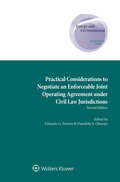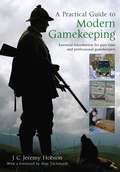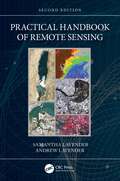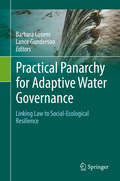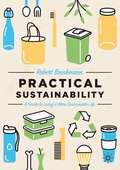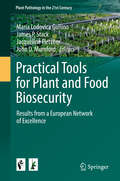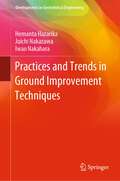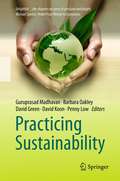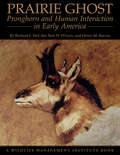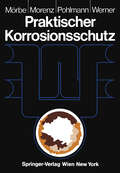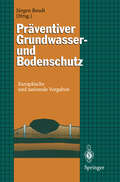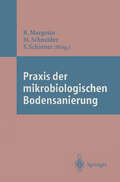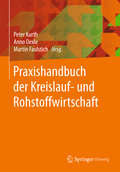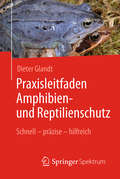- Table View
- List View
Practical Considerations to Negotiate an Enforceable Joint Operating Agreement under Civil Law Jurisdictions
by Eduardo G. Pereira & Damilola S. OlawuyiBecause agreements concerning oil and gas upstream activities have historically been developed in common law jurisdictions, a growing concern for the petroleum industry is that a some upstream investment might not be enforceable in a civil law jurisdiction to the extent the same standards/concepts are used without any adaptation. This is why it is essential to understand and analyse how to implement a Joint Operating Agreement in civil law countries. This new edition of this unique in-depth treatment of JOAs under civil law offers a new abundance of practical considerations addressing enforceability issues in a wide variety of civil law jurisdictions likely to be conducting joint operations among two or more parties. The country-by-country analysis helps greatly in ensuring that such issues and topics as the following will be covered in a contract subject to civil law: obligations and liabilities; relationship of the parties; exclusive operations; force majeure; hardship; and host granting instrument. A useful appendix to this new edition is dedicated to a wealth of short practical comments and specific guidance. The first edition of this book presented the first JOA edited book to address the essential requirements from a large variety of civil law perspectives. This new edition offers a broader and more complete discussion of the latest legal developments with respect to the legal framework and principles underpinning JOAs in more civil law countries. It analyses the main issues that the petroleum industry and its investors might face in civil law jurisdictions with actual or potential large oil and gas reserves, and as such it is a unique and immensely valuable source of information and guidance for oil and gas law practitioners, legal counsel, and business and commercial negotiators involved in transnational operating agreements around the world.
Practical Environmental Ethics
by A. Pablo IannoneThis essential volume for professionals and academics proposes a new approach to environmental ethics and to environmental policymaking in particular. All too frequently, policy makers focus only on what ends should ideally be pursued, ignoring whether the means have any negative unintended consequences. Such approaches tend to have a focus on consequentialist, deontological, virtue-cantered, or care-based theories which makes them too singularly-minded. They are not suitable for dealing with the complexities of life and, especially, environmental policy making.Practical Environmental Ethics distinguishes between cases in which entire ecosystems are at risk, threatening entire societies where collective consequences take precedence and cases in which whole ecosystems are not at risk where individual rights or duties take precedence. In doing this, Iannone discusses environmental controversies not only philosophically, but in the complex contexts at work within policy-making and decision-making communities. This allows for consideration of crucial concepts used in morality, biology, technology, business, economics, politics, and philosophy.Relying on numerous actual environmental cases, Iannone helps formulate realistic ways of logically and ethically determining how environmental controversies should be addressed. Ultimately, he proposes solutions that policy makers and anyone interested in this topic may utilize to clarify environmental issues and determine how to best deal with them for the greater good.
Practical Environmental Ethics
by A. Pablo IannoneThis essential volume for professionals and academics proposes a new approach to environmental ethics and to environmental policymaking in particular. All too frequently, policy makers focus only on what ends should ideally be pursued, ignoring whether the means have any negative unintended consequences. Such approaches tend to have a focus on consequentialist, deontological, virtue-cantered, or care-based theories which makes them too singularly-minded. They are not suitable for dealing with the complexities of life and, especially, environmental policy making.Practical Environmental Ethics distinguishes between cases in which entire ecosystems are at risk, threatening entire societies where collective consequences take precedence and cases in which whole ecosystems are not at risk where individual rights or duties take precedence. In doing this, Iannone discusses environmental controversies not only philosophically, but in the complex contexts at work within policy-making and decision-making communities. This allows for consideration of crucial concepts used in morality, biology, technology, business, economics, politics, and philosophy.Relying on numerous actual environmental cases, Iannone helps formulate realistic ways of logically and ethically determining how environmental controversies should be addressed. Ultimately, he proposes solutions that policy makers and anyone interested in this topic may utilize to clarify environmental issues and determine how to best deal with them for the greater good.
A Practical Guide To Modern Gamekeeping: Essential information for part-time and professional gamekeepers
by J.C. Jeremy HobsonThis book is a comprehensive gamekeeping manual for those enthusiastic amateurs who spend their spare time running a small DIY syndicate shoot, and for those who are professionally employed on a full-time basis. It shows the reader how to perform all the tasks required of the modern gamekeeper, including how to rear and release game and advises on many aspects of habitat improvement and conservation. It also covers important and sometimes controversial issues, such as public access on private land, the need for predator and pest control, and many other aspects which need to be considered by keepers, be they part-time or professional. You'll discover important information about: - The gamekeeper's calendar - Rearing and releasing methods - Safe and sensible use of veterinary medicines - Legislation and the law - Health & safety requirements - How to become a qualified keeper and the training needed. Bang up to date, this book also incorporates fascinating and interesting snippets and pictures from the past in order to show how this most traditional of countryside occupations has evolved. 'Jeremy Hobson does much in this book to apprise us all of the modern approach to keepering, from raising birds and habitat management to choosing coats and boots and training dogs. It is all here, and a fascinating read it is - both for those in the know and those who are curious to learn all about it.' Alan Titchmarsh, patron of the National Gamekeeper's Organisation
Practical Handbook of Earth Science
by Jane H. Hodgkinson Frank D. StaceyThis self-contained handbook provides a carefully researched, compact source of key earth science information and data, logically sorted by subject matter, and then cross-referenced. Appealing to both experts and non-experts alike, the book presents earth science and environmental science as closely intertwined. It includes tables of the global distributions of fossil fuels, contrasted by tables of the distribution of non-fossil energy sources. Concise explanations cover the subject matters of geology, geophysics, oceans, atmosphere with attention to environmental implications and resources.
Practical Handbook of Earth Science
by Jane H. Hodgkinson Frank D. StaceyThis self-contained handbook provides a carefully researched, compact source of key earth science information and data, logically sorted by subject matter, and then cross-referenced. Appealing to both experts and non-experts alike, the book presents earth science and environmental science as closely intertwined. It includes tables of the global distributions of fossil fuels, contrasted by tables of the distribution of non-fossil energy sources. Concise explanations cover the subject matters of geology, geophysics, oceans, atmosphere with attention to environmental implications and resources.
Practical Handbook of Remote Sensing
by Samantha Lavender Andrew LavenderThe number of Earth observation satellites launched in recent years is growing exponentially, along with the datasets they gather from free-to-access and commercial providers. The second edition of Practical Handbook of Remote Sensing is updated with new explanations and practical examples using the Copernicus satellite data and new versions of the open-source software. A new chapter and new applications have also been added. Thoroughly revised, the handbook continues to be a practical "how-to" remote sensing guide for those who want to use the technology, understand what is available, how to access it, and answer questions about our planet, but do not necessarily want to become scientific experts.
Practical Handbook of Remote Sensing
by Samantha Lavender Andrew LavenderThe number of Earth observation satellites launched in recent years is growing exponentially, along with the datasets they gather from free-to-access and commercial providers. The second edition of Practical Handbook of Remote Sensing is updated with new explanations and practical examples using the Copernicus satellite data and new versions of the open-source software. A new chapter and new applications have also been added. Thoroughly revised, the handbook continues to be a practical "how-to" remote sensing guide for those who want to use the technology, understand what is available, how to access it, and answer questions about our planet, but do not necessarily want to become scientific experts.
Practical Panarchy for Adaptive Water Governance: Linking Law to Social-Ecological Resilience
by Barbara Cosens Lance GundersonThis book presents the results of an interdisciplinary project that examined how law, policy and ecological dynamics influence the governance of regional scale water based social-ecological systems in the United States and Australia. The volume explores the obstacles and opportunities for governance that is capable of management, adaptation, and transformation in these regional social-ecological systems as they respond to accelerating environmental change. With the onset of the Anthropocene, global and regional changes in biophysical inputs to these systems will challenge their capacity to respond while maintaining functions of water supply, flood control, hydropower production, water quality, and biodiversity. Governance lies at the heart of the capacity of these systems to meet these challenges. Assessment of water basins in the United States and Australia indicates that state-centric governance of these complex and dynamic social-environmental systems is evolving to a more complex, diverse, and complex array public and private arrangements. In this process, three challenges emerge for water governance to become adaptive to environmental change. First, is the need for legal reform to remove barriers to adaptive governance by authorizing government agencies to prepare for windows of opportunity through adaptive planning, and to institutionalize the results of innovative solutions that arise once a window opens. Second, is the need for legal reform to give government agencies the authority to facilitate and participate in adaptive management and governance. This must be accompanied by parallel legal reform to assure that engagement of private and economic actors and the increase in governmental flexibility does not destabilize basin economies or come at the expense of legitimacy, accountability, equity, and justice. Third, development of means to continually assess thresholds and resilience of social-ecological systems and the adaptive capacity of their current governance to structure actions at multiple scales. The massive investment in water infrastructure on the river basins studied has improved the agricultural, urban and economic sectors, largely at the cost of other social and environmental values. Today the infrastructure is aging and in need of substantial investment for those benefits to continue and adapt to ongoing environmental changes. The renewal of institutions and heavily engineered water systems also presents the opportunity to modernize these systems to address inequity and align with the values and objectives of the 21st century. Creative approaches are needed to transform and modernize water governance that increases the capacity of these water-based social-ecological systems to innovate, adapt, and learn, will provide the tools needed to navigate an uncertain future.
Practical Sustainability: A Guide to a More Sustainable Life
by Robert BrinkmannThis book will teach you everything you need to know about sustainable living—from reducing your greenhouse gas footprint to making sure that you are part of the green economy. Along the way, readers will learn about the field of sustainability and the “three E’s” of sustainable living—environment, economy, and equity. We are in the midst of great environmental change and all of us need to do everything we can to try to live more gently on the planet. Robert Brinkmann provides a range of options for readers as to what they can do to try to make a difference. Some involve simple lifestyle changes - but he also challenges all of us to commit to make more difficult and more meaningful changes to create a greener, more sustainable world. The book also delves into how we can create more sustainable communities, schools, and organizations. It showcases many examples of people and organizations that are making significant contributions to improving our planet’s sustainability that serve as inspiration and guidance for all of us trying to live more sustainably.
Practical Tools for Plant and Food Biosecurity: Results from a European Network of Excellence (Plant Pathology in the 21st Century #8)
by Maria Lodovica Gullino James P. Stack Jacqueline Fletcher John D. MumfordThis book is based on EU-funded project PLANTFOODSEC, covering intentional and unintentional threats to plant biosecurity and to food safety areas.Biosecurity is a strategic and integrated approach for analysing and managing relevant risks to human, animal and plant life and health, and associated risks to the environment. Interest in biosecurity has risen considerably over the last decade in parallel with the increasing trade in food and plant and animal products; higher levels of international travel; new outbreaks of transboundary diseases.Although most diseases outbreaks have natural causes or are the result of inadvertent introductions of pathogens through human activities, the risk of a deliberate introduction of a high consequence plant pathogen cannot be excluded. Vigilance is required to identify, prevent and manage new and emerging issues that could impact on production capacity, plant biosecurity or food safety and food chain resilience.
The Practice of Research on Migration and Mobilities (SpringerBriefs in Environment, Security, Development and Peace #14)
by Liliana Rivera-Sánchez Fernando Lozano-AscencioThe migration process is interpreted in a different way when researchers live in so-called societies of origin, than when it is interpreted from societies of destination—even when research work is multi-situated. The localization of researchers in this field involves numerous factors that influence the modalities for conducting research. Research agendas are clearly mediated by these localizations and this book on the contemporary social sciences points out those mediations, breaking with the dichotomous readings that are implicit in this migration process (origin-destination, north-south, and cause-effect, to mention just a few). In the individual chapters, priority is given to presenting the modalities through which research is conducted in multidisciplinary or interdisciplinary teams on the American Continent. In summary, the focus of this book is on the narrative of methodological experience of the Practice of Research on Migration and Mobilities.
Practice of Sustainable Community Development: A Participatory Framework for Change
by R. Warren FlintOrdinary people, community leaders, and even organizations and corporations still do not fully comprehend the interconnected, “big picture” dynamics of sustainability theory and action. In exploring means to become more sustainable, individuals and groups need a reference in which to frame discussions so they will be relevant, educational, and successful when implemented. This book puts ideas on sustainable communities into a conceptual framework that will promote striking, transformational effects on decision-making. In this book practitioners and community leaders will find effective, comprehensive tools and resources at their finger-tips to facilitate sustainable community development (SCD). The book content examines a diverse range of SCD methods; assessing community needs and resources; creating community visions; promoting stakeholder interest and participation; analyzing community problems; designing and facilitating strategic planning; carrying out interventions to improve
Practices and Trends in Ground Improvement Techniques (Developments in Geotechnical Engineering)
by Hemanta Hazarika Juichi Nakazawa Iwao NakaharaThis book focuses on case studies from Bangladesh, Cambodia, India, Indonesia, Japan, Thailand and the USA in various ground improvement projects. It highlights new applications and trends in ground improvement geo-system including recycling, geo-environmental consideration and preservation of world cultural heritage. The contents will be useful for researchers and engineers to understand how the principles of ground improvement methods are executed in the site, basis of selection of a particular ground improvement technique in a project, cost-benefits of such methods, etc. This volume will also be a useful guide for beginners and intermediate-level practitioners dealing with geotechnical construction projects or who have interest in the development and practical application of ground improvement techniques. Engineers and researchers will find it helpful in developing, advancing and applying their techniques in the field.
Practicing Sustainability
by Guruprasad Madhavan, Barbara Oakley, David Green, David Koon and Penny LowSustainability applies to everybody. But everybody applies it differently, by defining and shaping it differently—much as water is edged and shaped by its container. It is conceived in absolute terms but underpinned by a great diversity of relatively “green”—and sometimes contradictory—practices that can each make society only more or less sustainable. In Practicing Sustainability, chefs, poets, music directors, evangelical pastors, skyscraper architects, artists, filmmakers, as well as scientific leaders, entrepreneurs, educators, business executives, policy makers, and the contrarians, shed light on our understanding of sustainability and the role that each of us can play. Each contributor addresses what sustainability means, what is most appealing about the concept, and what they would like to change to improve the perception and practice of sustainability. What emerges from their essays is a wide spectrum of views that confirm an important insight: Sustainability is pursued in different ways not only due to different interpretations, but also because of varying incentives, trade-offs, and altruistic motives. Practicing and achieving sustainability starts with a willingness to look critically at the concept. It also means enabling rich and vigorous discussion based on pragmatism and common sense to determine a framework for best ideas and practices. With time and the much needed critical thinking, sustainable development will become a more integral part of our culture. By sharing experiences and crisp insights from today’s savants, Practicing Sustainability serves as a stepping stone to the future.
Pragmatic Justifications for the Sustainable City: Acting in the common place (Routledge Equity, Justice and the Sustainable City series)
by Meg HoldenWhat can justice and sustainability mean, pragmatically speaking, in today’s cities? Can justice be the basis on which the practices of city building rely? Can this recognition constitute sustainability in city building, from a pragmatic perspective? Today, we are faced with a mountain of reasons to lose hope in any prospect of moving closer to justice and sustainability from our present position in civilization. Pragmatic Justifications for the Sustainable City: Acting in the Common Place offers a critical and philosophical approach to revaluating the way in which we think and talk about the "sustainable city" to ensure that we neither lose the thread of our urban history, nor the means to live well amidst diversity of all kinds. By building and rebuilding better habits of urban thinking, this book promotes the reconstruction of moral thinking, paving the way for a new urban sustainability model of justice. Utilizing multidisciplinary case studies and building upon anti-foundationalist principles, this book offers a pragmatic interpretation of sustainable development concepts within our emerging global urban context and will be a valuable resource for both undergraduate and postgraduate students, as well as academics and professionals in the areas of urban and planning policy, sociology, and urban and environmental geography.
Pragmatic Justifications for the Sustainable City: Acting in the common place (Routledge Equity, Justice and the Sustainable City series)
by Meg HoldenWhat can justice and sustainability mean, pragmatically speaking, in today’s cities? Can justice be the basis on which the practices of city building rely? Can this recognition constitute sustainability in city building, from a pragmatic perspective? Today, we are faced with a mountain of reasons to lose hope in any prospect of moving closer to justice and sustainability from our present position in civilization. Pragmatic Justifications for the Sustainable City: Acting in the Common Place offers a critical and philosophical approach to revaluating the way in which we think and talk about the "sustainable city" to ensure that we neither lose the thread of our urban history, nor the means to live well amidst diversity of all kinds. By building and rebuilding better habits of urban thinking, this book promotes the reconstruction of moral thinking, paving the way for a new urban sustainability model of justice. Utilizing multidisciplinary case studies and building upon anti-foundationalist principles, this book offers a pragmatic interpretation of sustainable development concepts within our emerging global urban context and will be a valuable resource for both undergraduate and postgraduate students, as well as academics and professionals in the areas of urban and planning policy, sociology, and urban and environmental geography.
A Pragmatist Orientation for the Social Sciences in Climate Policy: How to Make Integrated Economic Assessments Serve Society (Boston Studies in the Philosophy and History of Science #323)
by Martin KowarschWhile economic and other social science expertise is indispensable for successful public policy-making regarding global climate change, social scientists face trade-offs between the scientific credibility, policy-relevance, and legitimacy of their policy advice. From a philosophical perspective, this book systematically addresses these trade-offs and other crucial challenges facing the integrated economic assessments of the Intergovernmental Panel on Climate Change (IPCC). Based on John Dewey’s pragmatist philosophy and an analysis of the value-laden nature and reliability of climate change economics, the book develops a refined science-policy model and specific guidelines for these assessments of climate policy options. The core idea is to scientifically explore the various practical implications of alternative climate policy pathways in an interdisciplinary manner, together with diverse stakeholders. This could facilitate an iterative, deliberative public learning process concerning disputed policy issues. This volume makes novel contributions to three strands of the literature: (1) the philosophy of (social) science in policy; (2) the philosophy of economics; and (3) debates about the design of scientific assessments, including the continuous IPCC reform debate. This work is thus interesting for philosophers and other scholars reflecting on the science-policy interface, but also for assessment practitioners, climate policy-makers, and economists. The science-policy approach developed in this volume has already influenced the recent socio-economic IPCC assessment.
Prairie Ghost: Pronghorn and Human Interaction in Early America
by Richard E. McCabe Henry M. Reeves Bart W. O'GaraA Wildlife Management Institute Book In this lavishly illustrated volume Richard E. McCabe, Bart W. O'Gara and Henry M. Reeves explore the fascinating relationship of pronghorn with people in early America, from prehistoric evidence through the Battle of Little Bighorn in 1876. The only one of fourteen pronghorn-like genera to survive the great extinction brought on by human migration into North America, the pronghorn has a long and unique history of interaction with humans on the continent, a history that until now has largely remained unwritten. With nearly 150 black-and-white photographs, 16 pages of color illustrations, plus original artwork by Daniel P. Metz, Prairie Ghost: Pronghorn and Human Interaction in Early America tells the intriguing story of humans and these elusive big game mammals in an informative and entertaining fashion that will appeal to historians, biologists, sportsmen and the general reader alike. Winner of the Wildlife Society's Outstanding Book Award for 2005
Praktische Krankenhaushygiene und Umweltschutz
by E. Bux F. Daschner M. Dettenkofer I. Engels D. Hartung F. Hofmann I. Kappstein M. Rolff M. Scherrer E. Schmidt-Eisenlohr W. Schleipen R. Scholz A. Schneider I. Teuwen H. Wolf"Der DASCHNER" hat sich als grundlegendes Nachschlagewerk zu allen Fragen der Krankenhaushygiene einen Namen gemacht. Sein besonderer Vorzug ist seine Praxisnähe: Ohne theoretischen Ballast erhalten Sie eine Fülle unmittelbar praktisch verwertbarer Ratschläge und Empfehlungen. Darüber hinaus sorgen die klare, übersichtliche Gliederung und die verständliche Sprache für den richtigen Durchblick.Die 2. Auflage ist gründlich überarbeitet und aktualisiert, neue Kapitel und zahlreiche Literaturhinweise wurden neu aufgenommen.Was immer Sie über praktische Krankenhaushygiene und Umweltschutz, einschließlich der speziellen Aspekte aus den verschiedenen Fachgebieten, wissen müssen - hier finden Sie es! "...Das Buch ist so aufgebaut, daß es in übersichtlicher Form alle Themen behandelt, die einem täglich auf den Nägeln brennen sollten. Aufgrund des straffen Aufbaus, der hervorragenden Übersichtlichkeit und der Eignung zum Nachschlagen gehört es in jede Krankenhaus-Präsenzbibliothek...Ich halte das Buch für eine Pflichtlektüre für den klinisch tätigen Arzt..."(Klinikarzt)
Praktischer Korrosionsschutz: Korrosionsschutz wasserführender Anlagen
by Klaus Mörbe Wolfgang Morenz Hans-Werner Pohlmann Helmut WernerPraxis der mikrobiologischen Bodensanierung
by Rosa Margesin Manfred Schneider Franz SchinnerAltlasten und rezente Kontaminationen durch Unfälle und menschliches Fehlverhalten stellen eine Gefährdung der Biosphäre dar. Zum Schutz von Mensch, Tier und Pflanze müssen Boden, Wasser und Luft von anorganischen und organischen Schadstoffen möglichst freigehalten werden. Für die Sanierung von Böden stehen dabei unterschiedliche Technologien zur Verfügung. Die Vorteile einer mikrobiologischen Bodensanierung liegen in einer hohen Umweltverträglichkeit des Verfahrens, das durch minimalen Energieeinsatz und ohne Schaffung neuer Entsorgungsprobleme die Elimination und auch Mineralisation der Schadstoffe ermöglicht.
Praxishandbuch der Kreislauf- und Rohstoffwirtschaft
by Peter Kurth Anno Oexle Martin Faulstich Armin Rockholz Johannes Kirchhoff Markus Gleis Peter Quicker Christian Kabbe Gerhard Rettenberger Holger Alwast Michael Krüger Torsten Wenk Alexander De Diego Rainer Geesmann Dominik Lück Christine Radeloff Lammers Thomas Joachim Wuttke Sandra Giern Maren Heidmann Andreas Zühlsdorff Markus Figgen Rebecca Schäffer Joachim Hagmann Antje Wittmann Jens Gruber Jörg Karenfort Hendrik Reffken Lepper Christoph Hendrik Kempkes Andreas Bruckschen Dirk Mellen Tobias Becker Simon Obert Ochs Annette Aloys Oechtering Matthias Heinen Hans-Bernhard Rhein Laurent Hequet Matthias Staub Anne Nikodem Ralf Schmitz Thorsten Feldt Sabine Tirrel Ralf Reuter Isabelle Yoon Jens Loschwitz Jasmin Klöckner Berthold Heuser Klaus-Axel Riemann Ralf Gruner Klaus Fricke Sigrid Hams Sabine Flamme Christoph Bildstein Fabian Kraus Hans-Dieter Huber Ewa Harlacz Jan Seelig Kai Münnich Sebastian WankaDie traditionell vielschichtige Abfallwirtschaft entwickelt sich mit der ihr eigenen Dynamik zur Kreislauf- und Rohstoffwirtschaft. Im vorliegenden Handbuch werden erstmalig alle wesentlichen Aspekte dieses Wirtschaftssektors – fachübergreifend und interdisziplinär – behandelt. Neben den in der Ressourcenwirtschaft relevanten rechtlichen Fragestellungen (u. a. Stoffrecht, Verwaltungsrecht, Haftung und Transport) sind die unterschiedlichen Stoffströme dargestellt (z. B. Glas, Papier, Verpackung, Metalle und Elektronik-Altgeräte, Bioabfälle) sowie Anlagentechnik und Logistik beschrieben (Abfallwirtschaftssysteme, Abfallbehandlung, Deponierung). Bei der Auswahl der Themen und Autoren lag der Schwerpunkt auf Praxisrelevanz und Praxisbezug.Der Inhalt• Rechtlicher Rahmen: Beginn und Ende der Abfalleigenschaft, Stoffrecht, Einstufung von Abfällen, Nachweis- und Registerführung, Reichweite und Grenzen des staatlichen Entsorgungsmonopols, Handeln und Makeln, Exportrecht, Anlagenzulassungsrecht, Entsorgungsvertragsrecht, Vergaberecht, Kartellrecht, Straf- und Bußgeldrecht, Umweltmanagementsysteme• Stoffströme und Ressourcenwirtschaft: Glasrecycling, Altpapier, Kunststoffe, Verpackungsabfälle, Bioabfälle, Klärschlamm, Altholz, Elektroaltgeräte, Lithiumbatterien, NE-Metalle, Gewerbeabfall, mineralische Bauabfälle, steuerliche Konsequenzen der Energieströme• Technik, Logistik, Anlagen: Abfallwirtschaftskonzepte, Recyclingbörsen, IT in der Abfallwirtschaft, Anlagenplanung, Sammelfahrzeuge, Demontage, Verbrennung, Verbrennungsrückstände, Phosphorrecycling, Deponierung, DeponierückbauDie Zielgruppe• Verantwortliche in Unternehmen der Kreislauf- und Rohstoffwirtschaft, Anbieter umwelttechnischer Lösungen, Berater• Fachpersonal in öffentlichen Entsorgungsbetrieben, Umweltbehörden und Ministerien• Juristen und Rechtsanwälte
Praxisleitfaden Amphibien- und Reptilienschutz: Schnell – präzise – hilfreich
by Dieter Glandt Martin LayMit diesem handlichen Band werden Ihnen schnelle und zuverlässige Informationen in knapper übersichtlicher Form über alle mitteleuropäischen Amphibien- und Reptilienarten geboten.Frösche, Kröten, Unken, Molche, Salamander, Echsen und Schlangen in Deutschland, Österreich und der Schweiz werden behandelt. Dabei wird der Schwerpunkt auf die Gefährdung der Arten, deren Ursachen und besonders auf praktische Schutz- und Hilfsmaßnahmen gelegt.Studierende, freiberufliche Biologen, Landschaftsplaner und Naturschützer werden mit Gewinn dieses Nachschlagewerk bei Ihrer Arbeit nutzen. Interessierte Laien werden es gern in die Hand nehmen. Ziel der Maßnahmen soll sein, ein intaktes Netz in Verbindung stehender Populationen aufrecht zu halten oder dort, wo dies nicht der Fall ist, aufzubauen.Der Amphibien- und Reptilienschutz wird eingebettet in den Gesamtkomplex Naturschutz, wozu ein vorangestelltes allgemeines Kapitel dient. Verdeutlicht wird auch, dass diese Tiere einen wichtigen Stellenwert im Naturhaushalt (Stoffkreislauf) haben.
